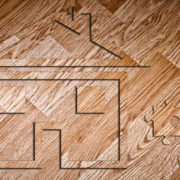Reviving Your Hardwood Floors: Breathing New Life Into Your Space
Decoding Your Hardwood Floors
Varieties of Hardwood Floors
Embarking on a restoration journey starts with recognizing the type of hardwood beneath your feet. In general, hardwood floors can be classified into two predominant types:
- Solid Hardwood: Crafted from single, unadulterated pieces of wood. Renowned for their durability, these floors can be sanded and refinished numerous times. They offer an elegant, ageless charm.
- Engineered Hardwood: Comprising multiple layers of wood, engineered hardwood is built to endure shifts in humidity and temperature. While they can’t be refinished as many times as solid hardwood, they still boast remarkable longevity and visual appeal.
Typical Issues with Aging Hardwood Floors
Despite their allure, hardwood floors aren’t impervious to the passage of time. Homeowners in Washington, DC, often grapple with problems such as:
- Scratches and Dents: High traffic, shifting furniture, and pets often leave behind visible marks and dents.
- Discoloration: Exposure to sunlight, spills, and natural aging can result in faded or discolored sections.
- Warping or Cupping: Variations in moisture and humidity can lead to warping or cupping, impacting both aesthetics and practicality.
- Loose Boards: Over time, the boards may become loose or start creaking, compromising the floor’s integrity.
Significance of Restoration
Revitalizing your hardwood floors goes beyond mere appearance; it serves functional purposes as well. Effective restoration can:
- Boost Durability: Addressing issues like scratches and warping can prolong the floor’s lifespan.
- Increase Home Value: Well-maintained hardwood floors are a sought-after feature, increasing your home’s market attractiveness.
- Health Perks: Eliminating old finishes and dust can contribute to a healthier living environment.
- Cost-Efficient: Timely restoration can stave off the need for full replacement, saving you money over time.
Grasping these aspects sets the stage for a triumphant restoration project, allowing you to inject new vitality into your treasured hardwood floors.
Preparation for Restoration
Proper preparation precedes any successful restoration. Follow these preparatory steps to ensure success:
Tools and Materials Required
- Sander: An indispensable tool for stripping the old finish and smoothing the surface.
- Stain: Pick a hue that harmonizes with or enhances your current floor.
- Finish: A premium sealant to protect the wood and provide a glossy finish.
- Vacuum Cleaner: Vital for removing all dust and debris both before and after sanding.
- Tack Cloth: A sticky cloth to wipe the surface after sanding, ensuring it is dust-free.
- Protective Gear: Safety glasses, dust mask, and ear protection.
- Paint Brushes and Rollers: For applying stain and finish uniformly.
- Painter’s Tape: To shield walls and trims.
Safety Precautions
Always place safety at the forefront when handling tools and chemicals:
- Don safety glasses to shield your eyes from dust and splinters.
- Utilize a dust mask to avert inhalation of fine particles.
- Guard your ears with earplugs or earmuffs when employing loud equipment like sanders.
- Ensure adequate ventilation, particularly when applying stains and finishes, to evade harmful fumes.
- Keep a first aid kit nearby for minor injuries.
Cleaning and Examining Floors
Before embarking on the restoration process, it’s critical to thoroughly clean and scrutinize your hardwood floors:
- Clean the Floor: Clear all rugs, furniture, and items. Vacuum to remove loose debris, then mop with a damp cloth to eradicate any remaining dirt.
- Inspect for Damage: Search for indications of damage such as deep scratches, gouges, or loose boards. Address these issues before sanding.
- Repair Damage: Fill in gaps or holes with wood filler and secure any loose boards with nails or screws.
- Test for Moisture: Employ a moisture meter to ensure the wood is dry. Excess moisture can stymie the restoration process and cause future damage.
Step-by-Step Restoration Course
Sanding the Floors
The initial crucial step in revamping your hardwood floors is sanding. Start by renting a professional-grade sander to ensure consistent sanding. Use coarse-grit sandpaper to strip old finishes and surface imperfections. Gradually transition to finer grits to smooth the surface. Move with the wood grain to avoid scratches. Don’t neglect the edges and corners; an edge sander or detail sander will help reach these areas.
Staining and Sealing
Once the floor is sanded and clean, proceed to the staining process. Pick a stain color that complements your aesthetic and apply it uniformly using a brush or cloth. Allow the stain to penetrate as recommended before wiping off excess. After the stain dries, seal the floor with a high-quality wood sealant to protect against moisture and wear. Apply in thin, even coats using a clean brush or roller, usually two to three coats for optimal protection.
Polishing and Final Touches
Once the sealant fully dries, the final step is polishing. Use a floor buffer with a polishing pad to achieve a glossy, smooth finish. Polishing not only elevates the floor’s appearance but also adds an extra protective layer. Consider adding baseboard moldings or trims to cover any gaps between the floor and walls, providing a neat, professional finish to your project.
Maintaining Your Revamped Floors
Preserving your newly restored hardwood floors is essential for retaining their beauty and robustness. Regularly sweep or vacuum to eliminate dirt and debris. Use a damp mop with a hardwood floor cleaner for deeper cleaning, but avoid excessive water. Place mats at entryways to minimize dirt, and use protective pads under furniture to deter scratches. With proper care, your restored hardwood floors will remain splendid for years to come.

